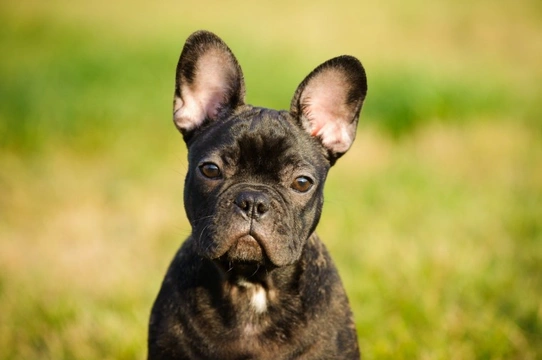
What are the health implications of a dog having a brachycephalic face?
Brachycephalic dogs are hugely popular in the UK, and some of the most popular dog breeds of all are brachycephalic, like the French bulldog, English bulldog, pug and Shih Tzu. Every year, thousands of dog lovers pick a brachycephalic breed as their next pet of choice – but not all first-time buyers know that having a brachycephalic face can have an impact on the dog’s health, care and wellness, particularly in dogs whose faces are overly exaggerated.
The trait of brachycephaly is tied to the health of the dog as it is impacted by the dog’s facial conformation, and there are several different health issues and care challenges that can arise in brachycephalic dogs.
This means that the conformation-related health of any given brachycephalic dog can be variable, and some dogs will be perfectly robust and healthy like any other dog, whilst those bred for extreme exaggerations often have a very poor quality of life and will be unable to do many things normal dogs can, and they may even require costly and complicated corrective surgeries to correct.
Whether or not any given brachycephalic dog has health problems relating to their conformation or not depends on numerous factors, and some dogs will suffer from no problems whatsoever whilst others may have multiple connected but individual health issues to contend with.
Here are the most common potential health issues that can accompany a brachycephalic face.
Breathing problems
Dogs with brachycephalic faces may have problems getting enough air to breathe comfortably, which can result in laboured or noisy breathing, snoring, open-mouthed breathing, panting excessively, and wheezing breath sounds.
Such dogs often have problems regulating their own body temperature and cannot get enough air to cool down, resulting in a low and potentially risky tolerance for hot weather, and poor exercise endurance.
A cluster of traits that often come together in brachycephalic dogs that have exaggerated faces include deformation or narrowing of the trachea, stenotic nares or narrow nostrils, occlusion of the airways, and a smaller area inside the mouth available for heat exchange of air by means of panting.
This cluster of traits is called brachycephalic obstructive airway syndrome or BOAS, and this issue is so prevalent within certain brachycephalic dog breeds that there is a grading scheme in place for some breeds to assess the level of acuteness of the face and so, its impact on the dog.
You can read more about this here.
Eye issues
Brachycephalic dogs often have prominent eyes due to the shape of their skulls, which makes the eyes more vulnerable to scratches and injuries and that can result in the development of corneal ulcers, and problems with tear production or drainage.
Dental problems
Because brachycephaly shortens the dog’s muzzle and palate and so, the area inside of the dog’s mouth, this can result in dental overcrowding, unusual dentition, and problems with the normal development of the teeth and gums. This can cause problems eating normally and potentially pain too, and may require surgical correction or dental extractions in extreme cases.
Ear problems
The shape of a brachycephalic dog’s head can result in skin folds and pockets or wrinkles of skin being present around the dog’s ears, and narrowing of the ear canals themselves. This can cause soreness and irritations, and the development of yeast infections within the ear canal.
Heart health
Brachycephalic traits can even have an impact on the dog’s heart health, because if the dog struggles to get enough air, the oxygenation level within the body will be lower than it should be which in turn, places their heart under additional strain.
Neurological defects
Brachycephalic dogs often have a wide, domed skull that can result in painful and debilitating issues like syringomyelia, as well as problems with the spine and back.
Delivering litters
Finally, some brachycephalic dog breeds like the French bulldog and English bulldog are commonly delivered by caesarean section as the shape and structure of the pups’ heads makes it difficult or impossible for their dams to deliver them naturally.
Do all brachycephalic dogs suffer from health issues?
As we’ve outlined above, the potential health issues that can accompany brachycephaly are numerous and significant, and this is a large part of the reason why brachycephalic dogs have quite a high profile in general in veterinary circles.
However, exhibiting some degree of brachycephaly does not necessarily mean that the dog in question will inherit all or any of these health problems, and a significant percentage of brachycephalic dogs are robust, healthy and suffer from no issues at all relating to their face shape.
On the flip side, a significant number of brachycephalic dogs do suffer from one or more of the above-mentioned issues to a greater or lesser degree, and some dogs will suffer from many or all of them, and may be very unhealthy as a result.
Choosing a healthy puppy means being able to assess the conformation of a brachycephalic pup’s head to make an informed conclusion about the risks, and you should always view the litter’s parent dogs and talk in detail to their owners about any issues within their breed lines too.



